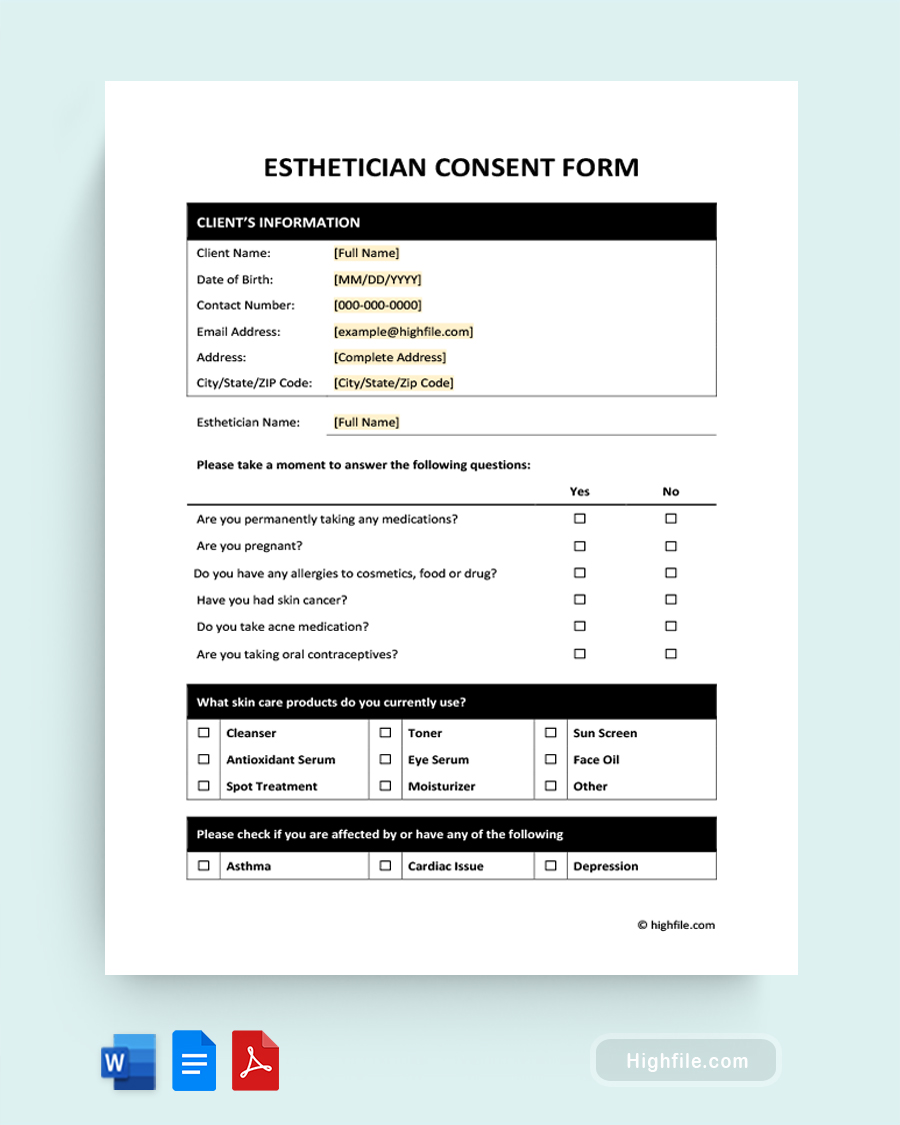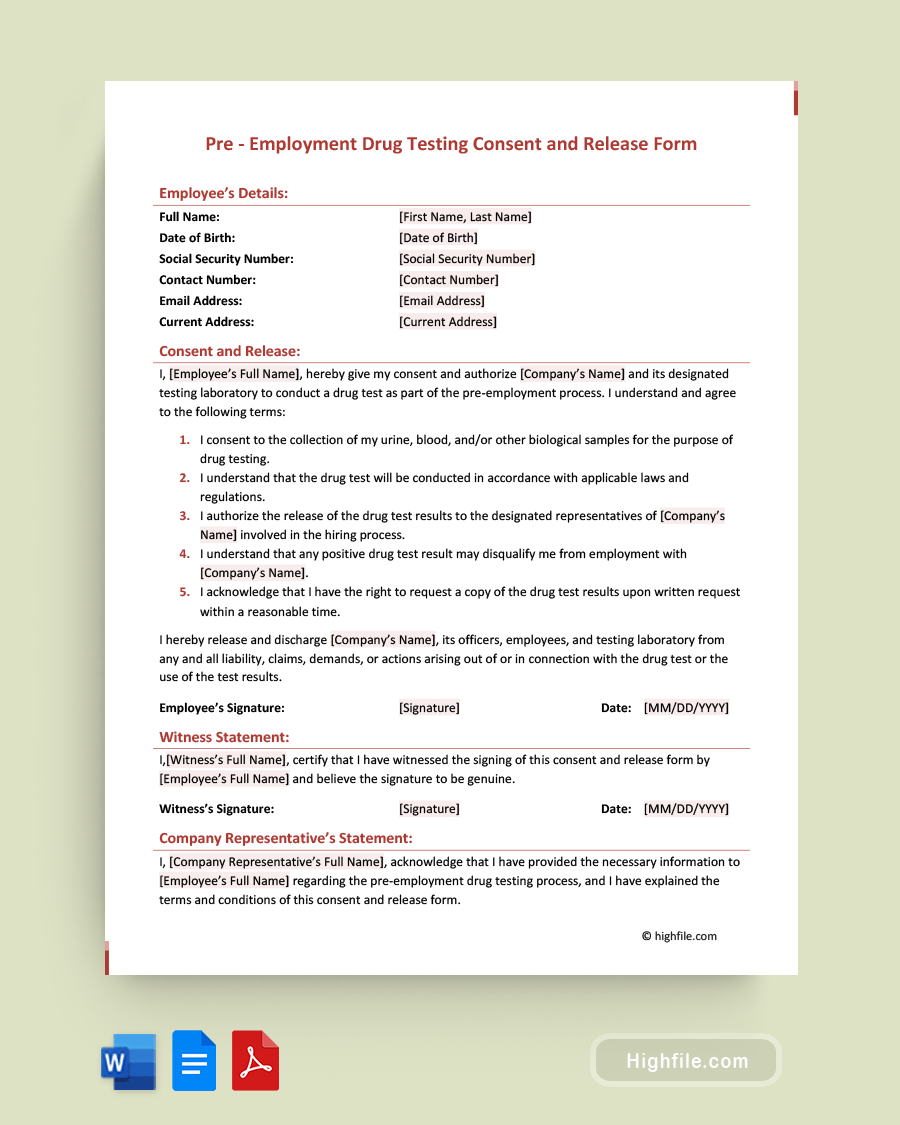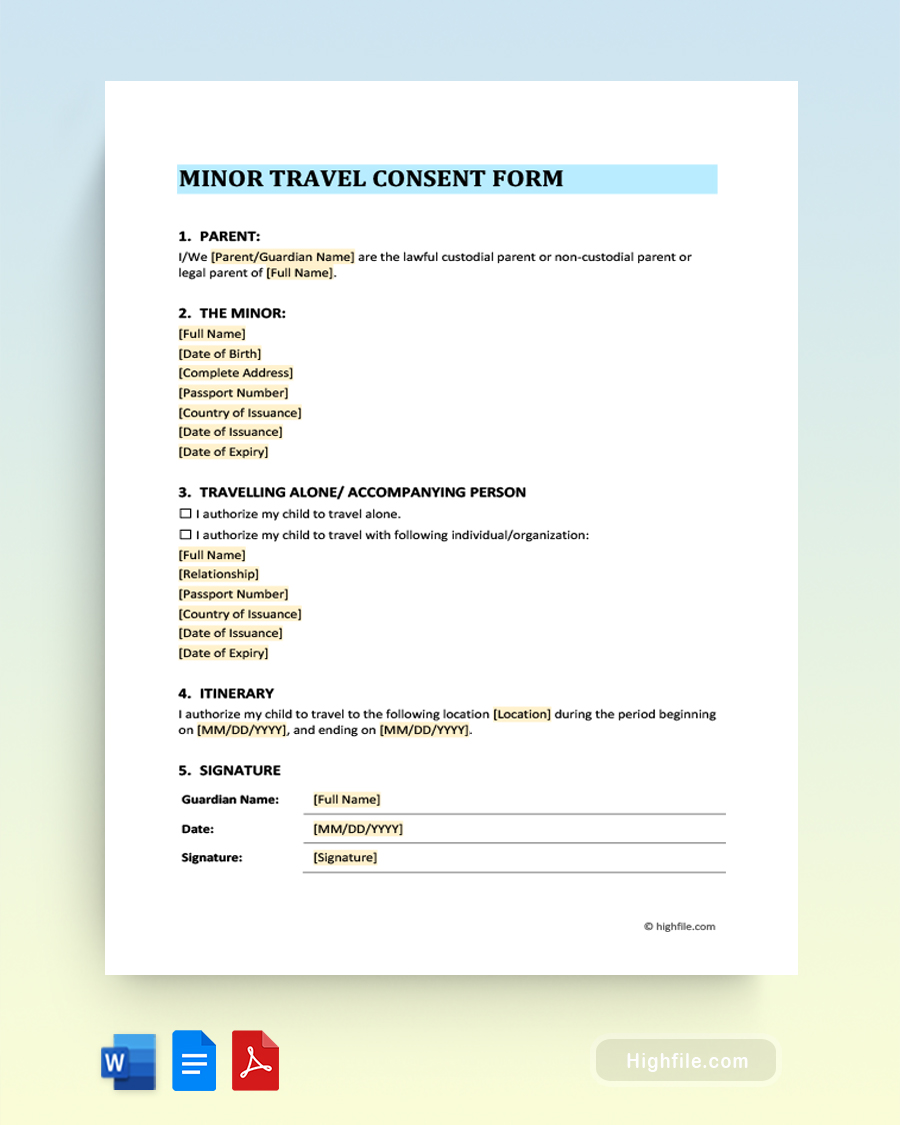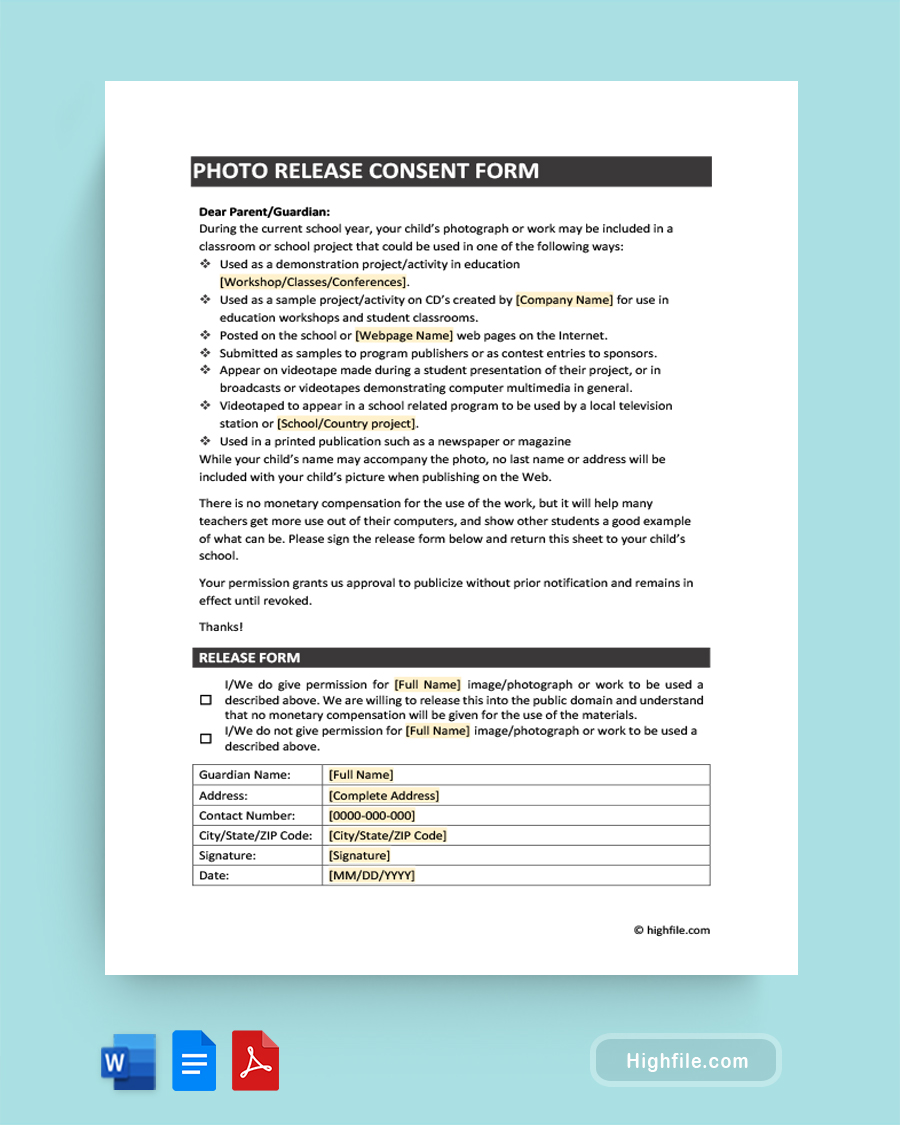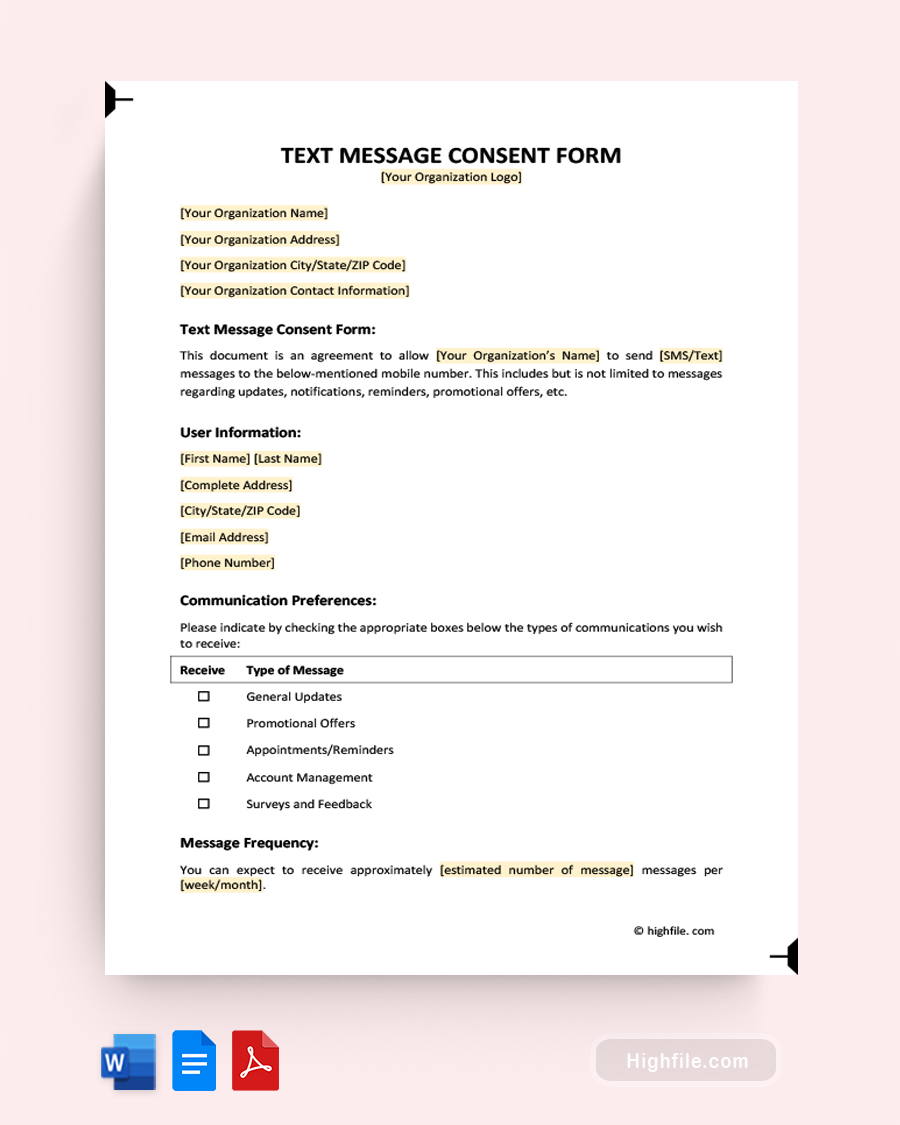Estheticians offer an extensive list of services. Some specialize, while others perform multiple treatment types daily. These can include everything from waxing and facials to microdermabrasion and chemical peels, but whatever the treatment, every esthetician should have their clients fill out an esthetician consent form first. In this article, you’ll learn everything you need to know to create a complete, professional consent form for your business. We recommend starting by downloading one of our preformatted, professionally designed templates. You can easily customize these templates in MS Word, Excel, or a similar program.
What Is an Esthetician Consent Form?
An esthetician consent form is a legally binding document showing the service agreement. The consent form should detail any possible complications, side effects, or risks and often include the aftercare sheet, which also changes how well some treatments work. Additionally, these forms show the proposed services and ask vital health questions that can impact the treatment outcome. Consent forms protect the esthetician and business and show that a well-informed client agreed to receive the services they requested.
Why Esthetician Consent Form is Important
Esthetician consent forms are important because you cannot prove the client agreed to treatment without them. Informed consent helps cover your bases in case of an adverse reaction or bad outcome. Instead of you being legally liable for what the client did not know about the treatment, this document shows that they’ve read and understood what they needed to in order to agree. Moreover, it proves that you did your due diligence in asking about medications and other health concerns that can interfere with some treatments’ application.
Clients who request services should always fill out and sign these waivers. For your safety and theirs, make no exceptions. You should keep your documentation and client records for seven years or as long as a local attorney advises you to keep records. For shop owners, the esthetician consent form fulfills another vital purpose. When the client signs, the person performing the treatment must also put their name down. As a result, you will always know who did which procedures to whom, and if there are problems with a service, this document proves who did the treatment. This can be useful when excusing an employee or freelancer legally or helping a good worker show that they were not at fault.
Essential Elements of an Esthetician Consent Form
The essential elements of an esthetician consent form are straightforward. These elements include data on the client, who the esthetician is, dates, signatures, contact information, and other acknowledgments. Below you’ll find all these elements in the order you generally see them on the page or pages.
- (Optional) Logo or business name
- A title showing what the form is intended for in bold print at the top
- The date of intake
- The client’s name, birthdate, and contact information
- Esthetician’s name
- Medical history, including relevant questions about allergies, medications, procedures, and any damage or surgeries.
- (Optional) Questions about the clients’ skincare and skincare concerns, including products they use, however, can be included on a separate skin assessment form
- Other relevant health questions like hair removal, recent treatments, and any related medical devices or implants
- Statements of acknowledgment showing the client understands your practices, expectations, and responsibilities, including polite conduct with the esthetician. This should also include that they must tell you if they experience pain or discomfort during the process and that they have provided accurate and complete medical information. Further, they comprehend the risks, have read everything, and consent to the treatment.
- Signature line for client
- (Optional) Directions and notes about post-treatment care and possible temporary (typical) irritation.
- (Optional for businesses that advertise) Any questions about how the client found your business or who referred them
Health Questions for Esthetician Consent Form
In this section, you’ll find the questions to ask every new intake before treating their skin. Including these on the esthetician consent form helps keep your paperwork and data centralized. Feel free to add or remove questions based on their relevance or what you need for your specific practice or region. You can also bookmark this page for future use. We recommend a simple two-column system of yes and no checkboxes, or you can break this up into smaller sections if you prefer. You may also need to leave a space for further elaboration in some areas, like the medication question.
- Do you take oral contraceptives?
- Are you pregnant?
- Are you taking any medications or supplements?
- Do you use acne medication?
- Are you allergic to anything, including, but not limited to, food, drugs, and cosmetic ingredients?
- Have you had skin cancer?
- Have you recently had any facial surgeries, treatments, or issues?
- Do you have rosacea or other skin-effecting conditions?
- Do you have the following (list each separately)- Any current contagious disease or illness, Anxiety, Asthma, Cardiac (heart) Conditions, Claustrophobia, Depression, Eczema, Epilepsy, Fever Blisters, Hepatitis, Herpes, High Blood Pressure, Hysterectomy, Immune Disorders, Lupus, Pressure, Sensitive Skin, Sinus Problems, or Skin Disease.
- What products do you use on your skin? (List each separately)- Antioxidant Serums, Chemical Peels, Cleansers, Creams (including lotions, makeup removal creams, and other similar products), Eye Cream, Facial Oils, Microdermabrasion, Moisturizers, Spot Treatments, Sunscreen, Toners, or Other Products.
Tips for Creating a Better Esthetician Consent Form
The tips in this section can help you foster trust, appear more professional and caring, and help clients with their overall comfort level, all of which lead to a better experience.
- If a product has multiple names, or common names other than what you call it, use all the names on your form so people will understand it.
- Always ask if the client understands each consent form section and if they have any questions. Then have them sign, initial, or checkmark an agreement stating that they fully understood the information, answered honestly, and received clear answers to all questions.
- Do not use overly colorful fonts and flowery styles. Instead, stick to a large, easy-to-read typeface so there’s no question about what each word says.
- Add a section to ask clients if they need accommodations for a disability, language barrier, or comfort.
- Ask clients to forgo putting products on their face or skin before the appointment unless you feel it’s necessary or beneficial.
- Include a statement about how long the treatment should take
- Remind clients to wear comfortable clothing and discuss whether they should bring or avoid bringing entertainment like phones, books, and tablets to the appointment.
FAQS
Below you’ll find the most frequently asked questions from people seeking information about estheticians’ consent forms. There are details on the limitations of an esthetician, their overall responsibilities, forms to keep on hand as an esthetician, and more.
Some forms, such as the medical history and general consent to treatment form, can be combined. Others should be for the esthetician’s records only, like the treatment history form for repeat clients. However, having these five forms on hand is a good idea.
ᐅ Esthetician Consent Form (general)- For most types of treatment
ᐅ Chemical Peel Consent Form- Specific to this one type of treatment
ᐅ Personal/Medical History Form- This can help avoid problematic interactions and mitigate other concerns.
ᐅ Treatment History Form- Keeping a record of what treatments a client has undergone with you is important so you don’t schedule the wrong treatments too closely.
ᐅ Skin Analysis- A general form for keeping notes on the client’s skin and any areas of concern
Estheticians provide skincare treatments to clients. Below is a quick list of what’s expected of an esthetician in general.
ᐅ Cleaning, maintenance, and sanitization of their area and equipment
ᐅ Well-mannered client greetings and professional behavior
ᐅ Informed consent intake and data collection
ᐅ Answering all questions about treatments
ᐅ Complies with best practices and especially chemical usage requirements
ᐅ Maintain client trust and confidentiality
ᐅ Advise and direct clients on skincare, treatment options, and aftercare instructions.
The short answer is yes. All esthetician services require consent. Performing services and treatments on human bodies always requires specific consent, especially when some of those services, like chemical peels, can have side effects and potential risks. Never perform a treatment without a complete intake and consent form.
There are so many amazing things an esthetician can do for you, but they can’t do everything. Below is a quick list of the most important things no esthetician can offer you unless they also have a medical license. Please note that estheticians are not qualified to handle severe inflammatory acne. While some cosmetic treatments may help with this condition, you must see a medical doctor for severe skin conditions.
ᐅ Diagnose Skin Conditions- Only a licensed medical professional can offer a medical diagnosis. You need a dermatologist or other specialist for this.
ᐅ Perform any Non-Cosmetic Procedure- Estheticians’ licenses are for cosmetic purposes only.
ᐅ Prescribe Medications for Skin- Only licensed medical doctors (and possibly some nurse practitioners) can offer prescriptions. This is a different license in a different field.
Final Thoughts
Esthetician services can help treat and beautify skin, but our skin is delicate. It’s essential for your esthetician to understand any health or medical information that can interfere with the treatment a client is seeking beforehand. A properly formatted and complete consent form shows everything the business, esthetician, and client all have the information they need, and it shows that an agreement was made for the services. Moreover, by sitting down and completing a consent form together, the esthetician ensures that the client can give informed consent because their questions are answered. A little professional paperwork can help streamline the process, minimize risks, and foster trust and confidence. Plus, a consent form allows professionals to avoid false claims when clients don’t provide complete information or perform proper aftercare.
